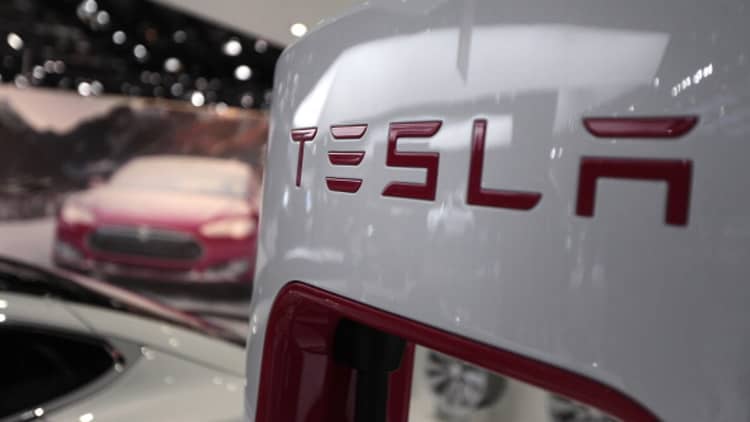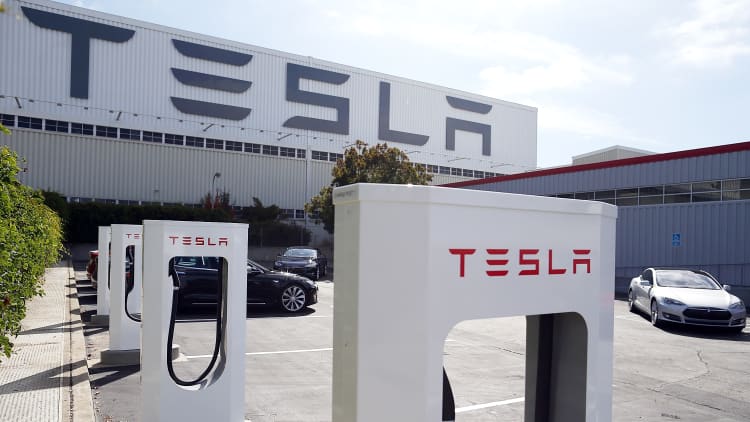The National Transportation Safety Board has "revoked" Tesla's status as a party to its investigation of a fatal crash that took place in Mountain View, California, in March.
However, Tesla maintains it withdrew from the probe.
An Apple engineer named Walter Huang was killed in the March 23 crash, driving a 2017 Tesla Model X with Tesla's Autopilot systems engaged.
Huang's family hired a law firm, Minami Tamaki, to explore their legal options, they announced this week. The firm has publicly stated that it believes the Autopilot feature in the Model X potentially caused Huang's death.
The NTSB said in a statement on Thursday:
"The NTSB took this action because Tesla violated the party agreement by releasing investigative information before it was vetted and confirmed by the NTSB. Such releases of incomplete information often lead to speculation and incorrect assumptions about the probable cause of a crash, which does a disservice to the investigative process and the traveling public."

In the release, NTSB Chairman Robert Sumwalt wrote, "We decided to revoke Tesla's party status and informed Mr. Musk in a phone call last evening and via letter today. While we understand the demand for information that parties face during an NTSB investigation, uncoordinated releases of incomplete information do not further transportation safety or serve the public interest."
The NTSB previously expressed concern about a March 30 blog post from Tesla that suggested Huang was at fault and included the following:
"In the moments before the collision, which occurred at 9:27 a.m. on Friday, March 23rd, Autopilot was engaged with the adaptive cruise control follow-distance set to minimum. The driver had received several visual and one audible hands-on warning earlier in the drive and the driver's hands were not detected on the wheel for six seconds prior to the collision."
Tesla told CNBC that it withdrew from the NTSB investigation, and sent an updated statement on Thursday.
"It's been clear in our conversations with the NTSB that they're more concerned with press headlines than actually promoting safety," Tesla said. "Among other things, they repeatedly released partial bits of incomplete information to the media in violation of their own rules, at the same time that they were trying to prevent us from telling all the facts. We don't believe this is right and we will be making an official complaint to Congress."
Here is the full statement:
"Last week, in a conversation with the NTSB, we were told that if we made additional statements before their 12-24 month investigative process is complete, we would no longer be a party to the investigation agreement. On Tuesday, we chose to withdraw from the agreement and issued a statement to correct misleading claims that had been made about Autopilot — claims which made it seem as though Autopilot creates safety problems when the opposite is true. In the US, there is one automotive fatality every 86 million miles across all vehicles. For Tesla, there is one fatality, including known pedestrian fatalities, every 320 million miles in vehicles equipped with Autopilot hardware. If you are driving a Tesla equipped with Autopilot hardware, you are 3.7 times less likely to be involved in a fatal accident and this continues to improve.
It's been clear in our conversations with the NTSB that they're more concerned with press headlines than actually promoting safety. Among other things, they repeatedly released partial bits of incomplete information to the media in violation of their own rules, at the same time that they were trying to prevent us from telling all the facts. We don't believe this is right and we will be making an official complaint to Congress. We will also be issuing a Freedom Of Information Act request to understand the reasoning behind their focus on the safest cars in America while they ignore the cars that are the least safe. Perhaps there is a sound rationale for this, but we cannot imagine what that could possibly be.
Something the public may not be aware of is that the NTSB is not a regulatory body, it is an advisory body. The regulatory body for the automotive industry in the US is the National Highway Traffic Safety Administration (NHTSA) with whom we have a strong and positive relationship. After doing a comprehensive study, NHTSA found that even the early version of Tesla Autopilot resulted in 40% fewer crashes. Autopilot has improved substantially since then.
When tested by NHTSA, Model S and Model X each received five stars not only overall but in every sub-category. This was the only time an SUV had ever scored that well. Moreover, of all the cars that NHTSA has ever tested, Model S and Model X scored as the two cars with the lowest probability of injury. There is no company that cares more about safety and the evidence speaks for itself."
The NTSB said that revoking party status in investigations is rare, but not unprecedented.
— Robert Ferris contributed to this report.
Correction: This article has been revised to indicate that the car involved in the crash was a Tesla Model X.
WATCH: Tesla eyes November 2019 for Model Y production



